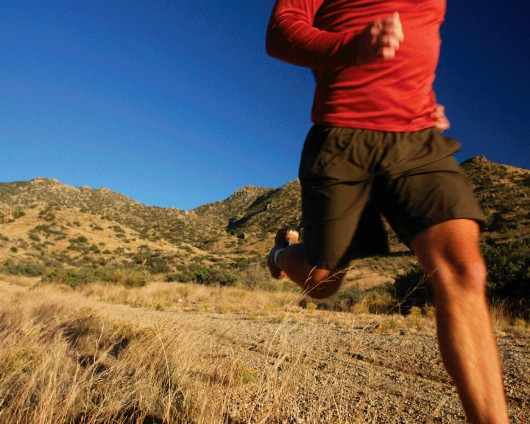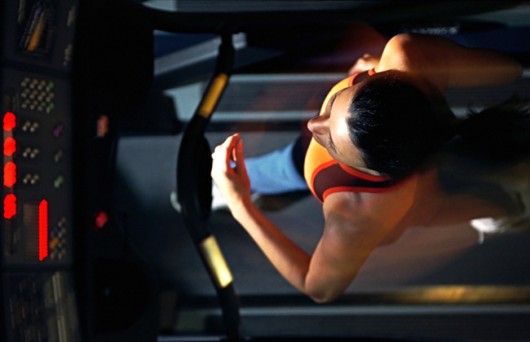Running is a great form of exercise for people of all ages and fitness levels. Anyone who owns a pair of trainers can start running, without having to learn lots of technique or have lots of expensive equipment that is associated with some other sports.
Running is a cardiovascular activity that burns calories quickly. It is perfect as part of a versatile exercise regime. Runners claim that jogging can become pretty addictive and the feeling of beating your last time or running an extra kilometre, gives a huge sense of achievement and a boost to your confidence. Though for losing weight, the best is high intensity interval training. The bursts of 20-30 seconds, dramatically boosts your metabolism rate.

There are a number of websites, books and magazines offering tips and advice for running, including everything from what to wear to how to stop getting blisters. Here are just some pieces of advice to get you started.
Indoor Running vs Outdoor Running
Treadmill running is often seen as the easier option all round. The machine clocks your speed and distance as well as the percentage of incline for hill work. Nothing is left to chance and is all controlled, meaning all you need to do is concentrate on running. You can even pre-set a programme to suit your needs, which will add the hills and change the speeds for you as you run through the programme, including a warm up and cool down.
The downside to using a treadmill is how monotonous it feels, although some people enjoy sticking some headphones on or watching television and switching off as they run. A treadmill is easier to run on than the pavements/grass/trails outdoors. The belt on the machine assists your running and of course, you are not faced with the elements (such as wind resistance).

The good thing about the belt, is that it is kinder to your joints and if you suffer from shin splints, injury and pain is less likely on a treadmill. The belt is fine for your daily gym run and routine, but not so good when training for competitive races and needing the ‘rehearsal’ of the outdoors.
Runners enjoy running outdoors because of the scenery, which often makes a run feel like it is over quicker. Outdoor is the real deal, the hills and resistance are genuine and nothing quite beats that, especially when training for a race. The difficulty in running outside is keeping track of pace and distance. Although with top health and fitness apps and gadgets these days, this is easier, as well as the elements – the snow, ice, extreme wind, rain or heat which can cause injury or are safety hazards.
Top Tips for Runners
- Set yourself a goal, whether this is a quicker time or a longer distance. Perhaps even enter a 10k race and have something to aim for.
- Increase your training gradually, to avoid too much impact on your bones and muscles and vary your running routine, with short runs breaking up longer run days.
- Running first thing in the morning, whether you are a ‘morning person’ or not, can be a great way to start the day and release endorphins.
- Using light weights with lots of repetitions, alongside your running schedule can help build muscle endurance and stamina.
- Don’t be too hard on yourself. Everyone has a bad day but don’t let a poor time or lack of motivation altogether put you off your stride
- Joining a running club or running with a friend will keep your goals on track and help with moral support and motivations.
- Keep a track on your progress by charting your runs – where, when, the time and any notes of interest that will help you reflect on what you have achieved and how far you have left.
- Put petroleum jelly on your skin to avoid chafing or on feet to help minimise blisters and don’t do a long run in new trainers or socks. Small things like this can actually put you off running for a long time and be very painful.
- Don’t run straight after eating or even drinking too much water or you will get a dreaded ‘stitch.’ When you run, take small sips of water along the way.
- Ensure that you run with the correct posture/running gait to avoid back pain and check your footwear is right for your feet.
- Sport drinks are high in calories but after a long or intense run, your body will be happy to refuel.
- Eat carbohydrates the night before a long run, for slow release of energy.
- Running burns a lot of calories, so be sure to eat enough to maintain a healthy weight but still be sure to eat the ‘right’ foods, rather than chocolate and biscuits, as hungry as you may feel after a difficult run.
- Motivation can always be difficult, especially if you are heading for an outdoors run in the wind and rain, but the best thing to do is start … even if you run for 10 minutes and turn back, it is still 10 minutes of cardiovascular activity that you otherwise would have avoided.
- Don’t forget to warm up before you start and stretch your muscles properly afterwards, which will help your recovery and get you back running in no time!
Of course, there are hundreds of pieces of advice for runners of all levels, but everyone is different and the best way to learn is to get running and find out what suits you best. You can test various pre-running foods and find out whether your prefer to run indoors or outdoors, alone or with a running partner or club and enjoy the experience as you get fit along the way!
And if you are not sure that running is the thing you want to do, check what’s the best and efficient cardio workout for you.



